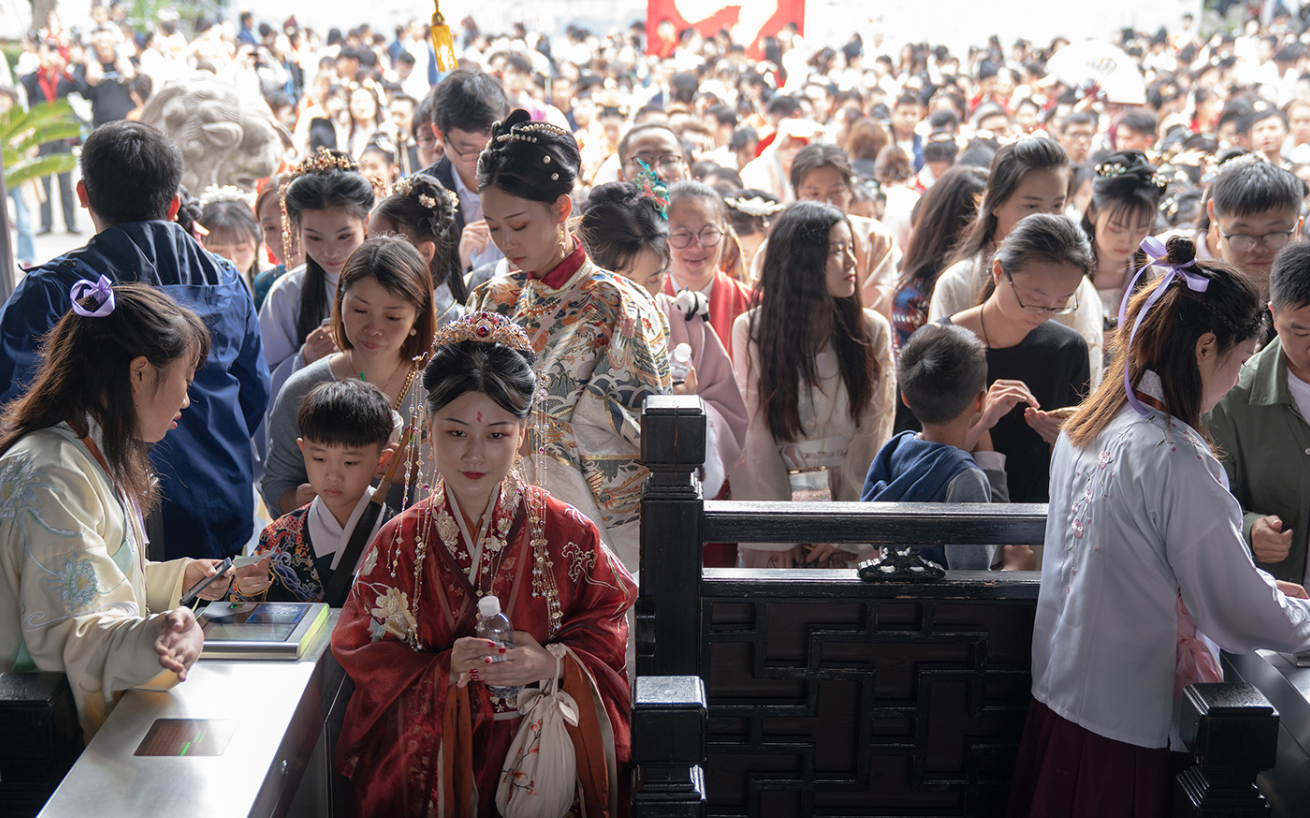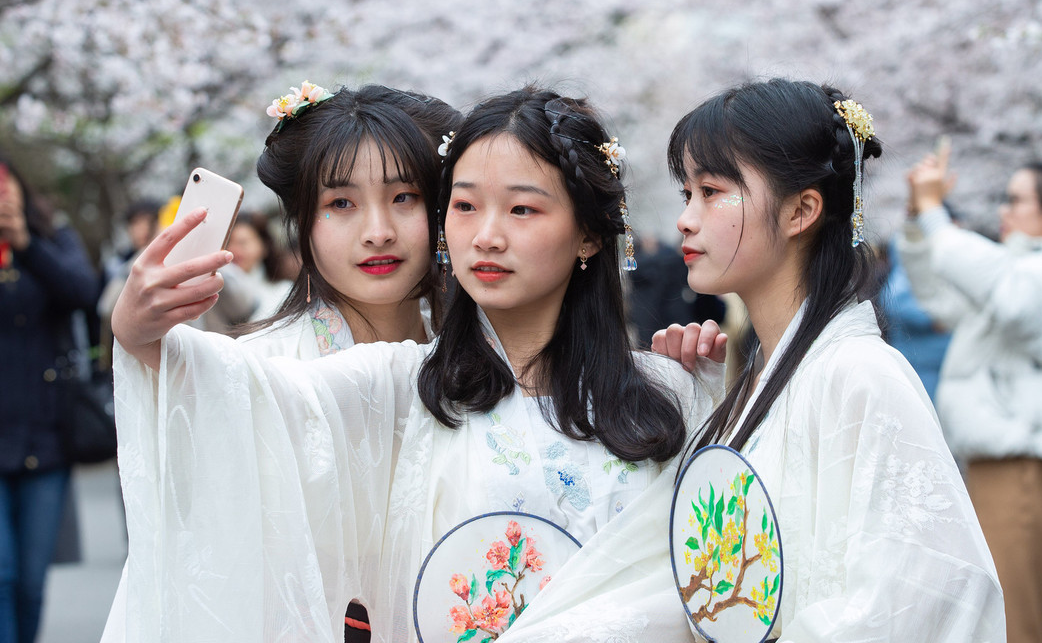The Hanfu Movement is a cultural resurgence in China focused on reviving traditional Han Chinese clothing, often linked with Chinese nationalism and cultural identity.
What is Nationalism?
Nationalism is a complex political and social ideology that centers on the identification with and loyalty to a particular nation. Generally speaking, nationalism involves a sense of collective identity based on shared history, language, culture, and often, a common territory. Below we delve into the nuances of nationalism by exploring its various forms and how it manifests in China specifically.

The Concept and Forms of Nationalism
Nationalism exists in various forms that differ based on historical context, regional variations, and underlying ideologies. Here are some of the more commonly recognized forms:
- Ethnic Nationalism: Rooted in shared ethnicity, language, and culture, this form often sees the nation as an extension of a particular ethnic group.
- Civic Nationalism: Unlike ethnic nationalism, civic nationalism is based on shared values, political beliefs, and allegiance to a set of democratic institutions.
- Cultural Nationalism: This focuses on the shared cultural practices, traditions, and folklore of a particular nation. It’s less concerned with ethnic background or civic institutions but centers on cultural unity.
- Religious Nationalism: In this form, the unity of a nation is defined by a shared religion or a strong connection between the government and a particular religion.
The above forms are not mutually exclusive and can overlap or evolve over time. However, it is crucial to understand these distinctions to appreciate how nationalism functions in different settings, including China.
Nationalism in China: A Brief Overview
In the context of China, nationalism has played a vital role in shaping the modern state and its international relations. While early forms of Chinese nationalism were influenced by Confucianism and dynastic loyalty, modern Chinese nationalism is complex and multifaceted. Here are some key features:
- State-Sponsored Nationalism: The Chinese government often promotes nationalism as a means to unify the country and legitimize its authority. This is particularly evident in educational systems and media narratives.
- Han Nationalism: With Han Chinese comprising the majority of the population, there is a specific form of Han nationalism that emphasizes the unity and superiority of the Han ethnic group. This form is often interlinked with the Hanfu Movement, which we will discuss later.
- Anti-Foreign Sentiment: At times, nationalism in China has manifested as anti-foreign sentiment, particularly against countries seen as historical aggressors or current geopolitical rivals.
- Global Ambitions: Chinese nationalism is increasingly characterized by a desire for international recognition and a leading role on the global stage, often through economic and technological advancement.
Emergence of the Hanfu Movement
The Hanfu Movement is a social and cultural phenomenon in China aimed at reviving Han Chinese clothing, often dated back to various Chinese dynasties. It has grown exponentially in recent years, generating debates and discussions on cultural identity, historical continuity, and nationalism.
Initial Sparks and Key Figures
The Hanfu Movement did not emerge in a vacuum. It had its initial sparks in the early 2000s, when a younger generation of Chinese began exploring their roots. Internet forums served as a breeding ground for this exploration, with sites like Hanwang leading the discussion. Key figures like Wang Letian, who famously wore Hanfu in public and endured both ridicule and admiration, became pivotal in initiating the widespread interest in Hanfu. Celebrities and influencers also played a role, donning Hanfu during public events and through social media platforms like Weibo and Douyin, the Chinese version of TikTok.
Around the same period, various Hanfu organizations and societies came into existence. These groups organized events, workshops, and even Hanfu parades, providing an avenue for enthusiasts to gather, share, and celebrate their cultural identity.
Growth and Popularity
The popularity of the Hanfu Movement has skyrocketed over the past decade. While it began as a niche subculture, it has since broken into mainstream consciousness. Various factors have contributed to this growth:
- Social Media Impact: Platforms like Weibo and Douyin have been instrumental in spreading the movement. Users post photographs and videos, sometimes going viral, thereby attracting a broader audience.
- Commercialization: The Hanfu market has exploded with a wide range of offerings from different periods and styles. Businesses and startups are now designing, producing, and marketing Hanfu clothing, often raking in significant profits.
- Public Events: The occurrence of Hanfu-themed festivals and events has become more frequent, offering communal spaces for enthusiasts to engage in. Such events often garner media attention, further popularizing the movement.
- Intersection with Nationalism: There has been an increasing overlap between the Hanfu Movement and Chinese nationalism. The clothing serves as not just a fashion statement but also an assertion of cultural pride and identity, especially among the younger generation.
Hanfu Movement as a Form of Cultural Nationalism
The Hanfu Movement does more than just revive ancient Chinese clothing; it serves as a lens to examine China’s broader sense of cultural nationalism. This is an intricate form of nationalism that places emphasis on cultural heritage as a source of national identity. While the Hanfu Movement is certainly not the only form of cultural nationalism in China, it has become one of its most visible and potent expressions.
Assertion of Cultural Identity
The primary driver behind the Hanfu Movement is the assertion of cultural identity. For many Hanfu enthusiasts, wearing these traditional garments is not just about fashion but also about reconnecting with a cultural heritage that they feel has been suppressed or overshadowed. This act of wearing Hanfu becomes a statement, a declaration of cultural distinctiveness, and a nod to a shared history that predates even the formation of modern China.
Interestingly, some enthusiasts extend this to other cultural practices, such as traditional Chinese tea ceremonies, calligraphy, and Confucian philosophies. The Hanfu Movement has thus become a comprehensive platform for the younger generation to explore and assert their Han Chinese identity.
Political Implications and Debates
While the movement has been mostly a cultural resurgence, it’s impossible to divorce it entirely from the political landscape in China. The government often employs Hanfu as a tool for promoting national unity and Chinese culture, subtly or overtly. This makes the Hanfu Movement susceptible to co-option for political purposes, further intertwining it with broader trends in Chinese nationalism.
Public Reception and Criticism
The Hanfu Movement has elicited a wide range of reactions from the public, not all of which have been positive. While it has amassed a strong following and rekindled interest in Chinese history and culture, it has also faced criticism and sparked controversies over issues like cultural authenticity and ethnic inclusivity.
Popular Support
A growing segment of the population, particularly among younger generations, has embraced the Hanfu Movement with open arms. Social media platforms are awash with pictures, how-to guides, and stories of people wearing Hanfu in their daily lives or during special occasions. The growth in popular support is evident in the increasing number of Hanfu stores, both online and physical, as well as Hanfu events that draw participants in the thousands.
This surge in popularity is partly attributed to a broader wave of cultural revivalism sweeping across China. For many, the Hanfu Movement is more than just a fashion trend; it’s a form of self-expression and a direct connection to their heritage. As such, the movement has a dedicated and passionate community that sees it as an embodiment of Chinese cultural pride.

Criticisms and Controversies
Despite its burgeoning popularity, the Hanfu Movement has not been without its share of criticisms. One of the most prominent issues raised is that of cultural and historical accuracy.
Hanfu Movement in the Global Context
The Hanfu Movement, while rooted in Chinese culture and history, has started to make waves beyond China’s borders. Whether it’s through cultural exchanges, social media influence, or diaspora communities, the movement has both a global reach and counterparts in other nations. Here, we delve into the movement’s international influence and draw parallels with similar movements worldwide.
Hanfu’s Influence Outside of China
There is an increasing fascination with the Hanfu Movement among people outside of China, and this can be attributed to multiple factors. First, social media platforms have allowed the movement to transcend geographical boundaries. Images, videos, and discussions about Hanfu are accessible to anyone with an internet connection, inspiring curiosity and even adoption of the fashion among non-Chinese audiences.
Second, the Chinese diaspora plays a significant role in exporting this cultural trend. Many overseas Chinese communities are embracing Hanfu as a way to connect with their heritage, leading to the opening of Hanfu stores and organizing of events in countries like the United States, Canada, and Australia.
Moreover, the globalization of Chinese pop culture, including films, TV shows, and music that often feature Hanfu, has contributed to a broader international interest. Series like Nirvana in Fire have garnered international fan bases, further popularizing the cultural elements associated with Hanfu.
Comparative Analysis: Similar Movements in Other Nations
When looking at the Hanfu Movement from a global perspective, it’s valuable to compare it with similar cultural revival movements in other countries. For instance, Japan has its own cultural fashion revival in the form of Kimono culture. Like Hanfu, the wearing of Kimonos has seen a resurgence in recent years, driven by both a renewed interest in traditional culture and a sense of national pride.







